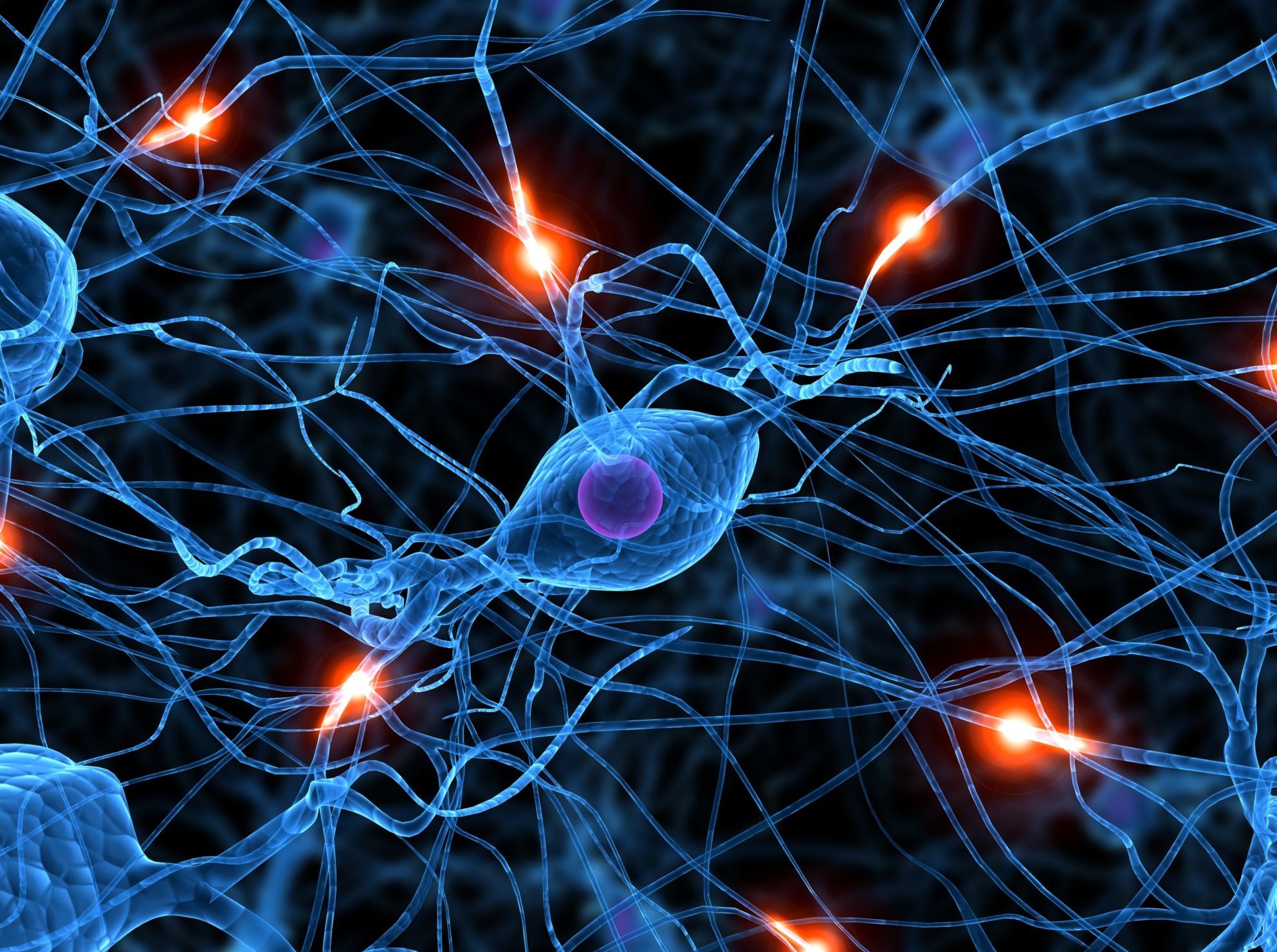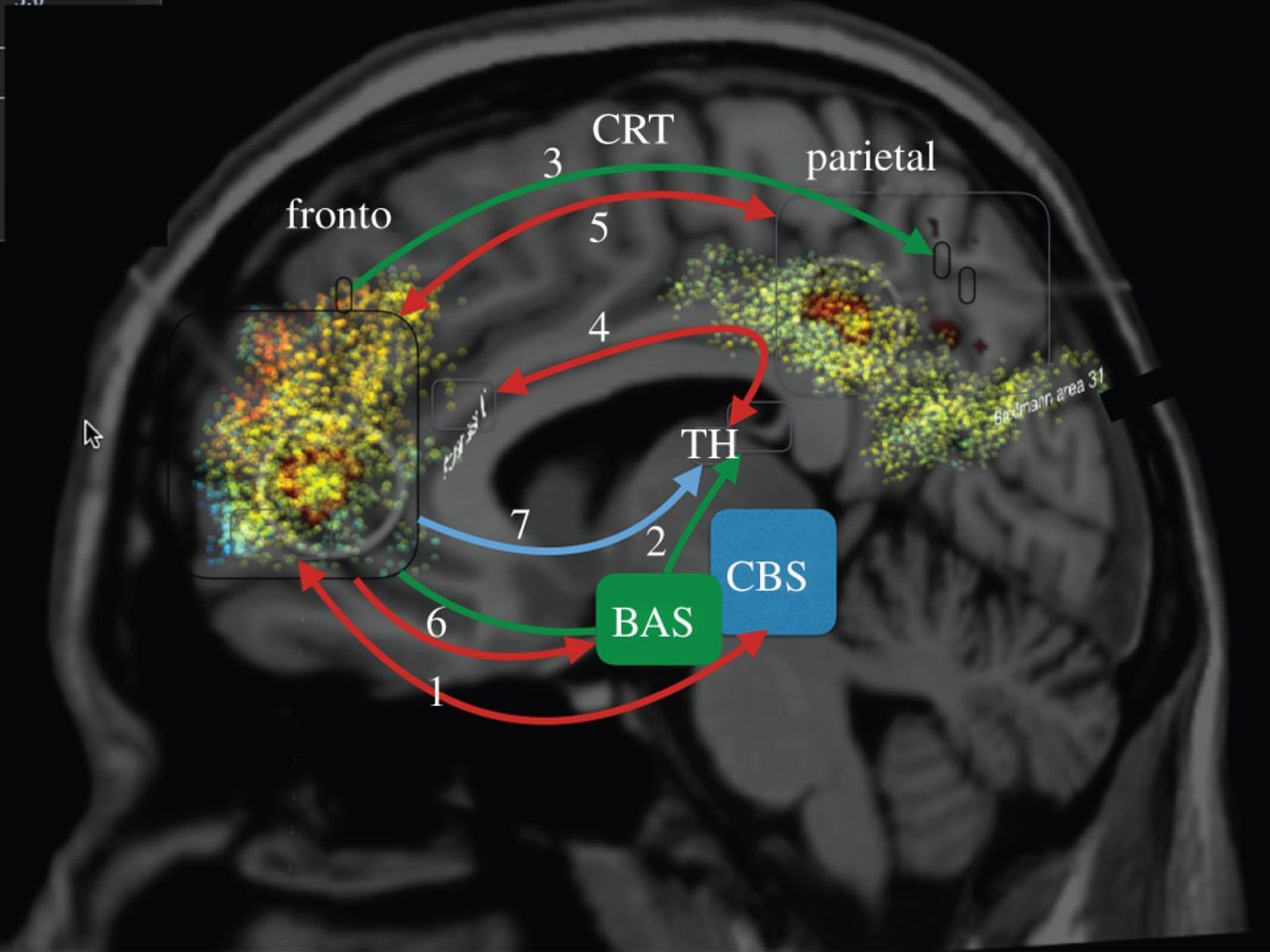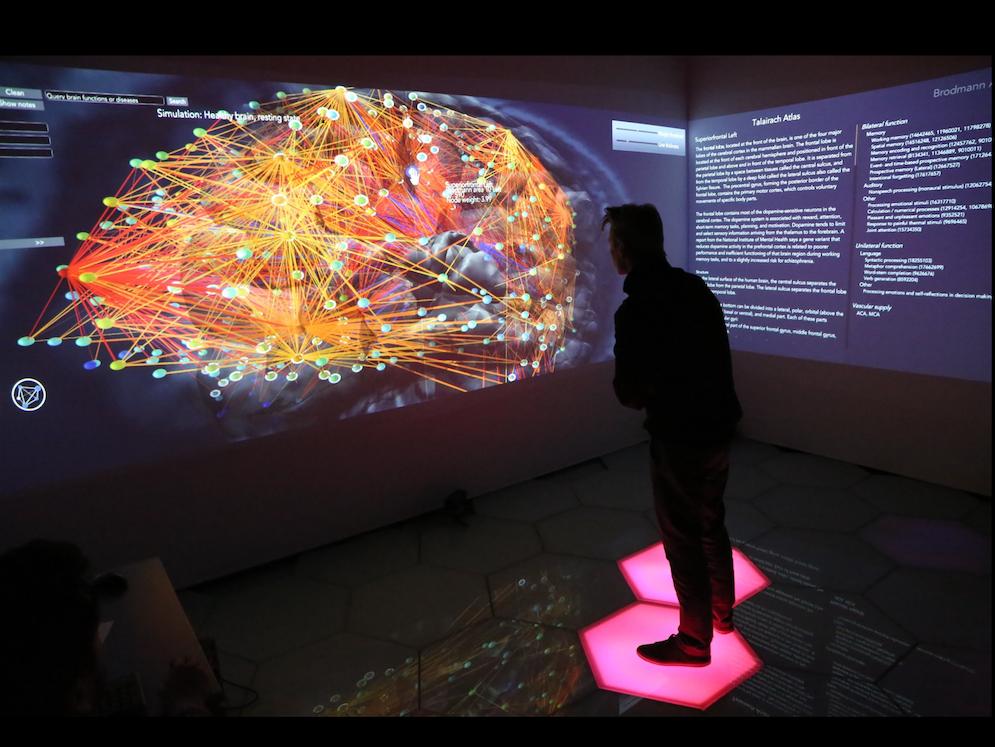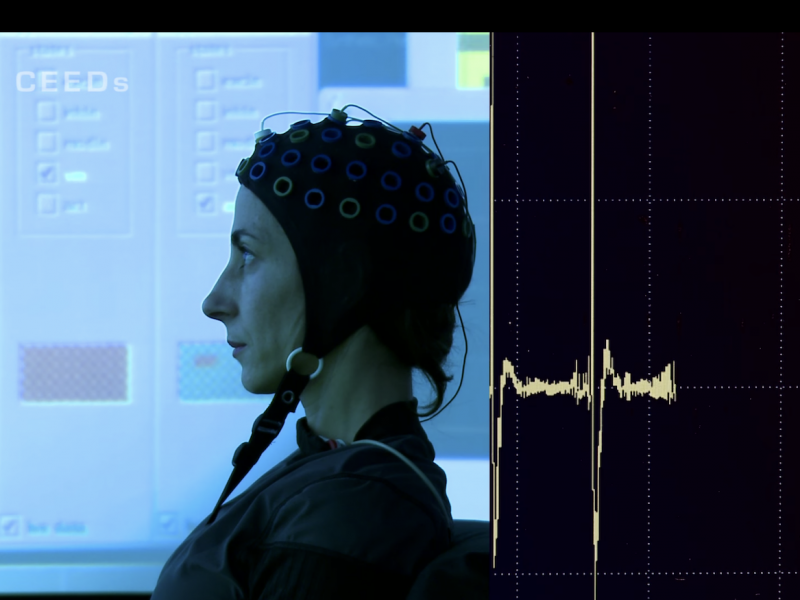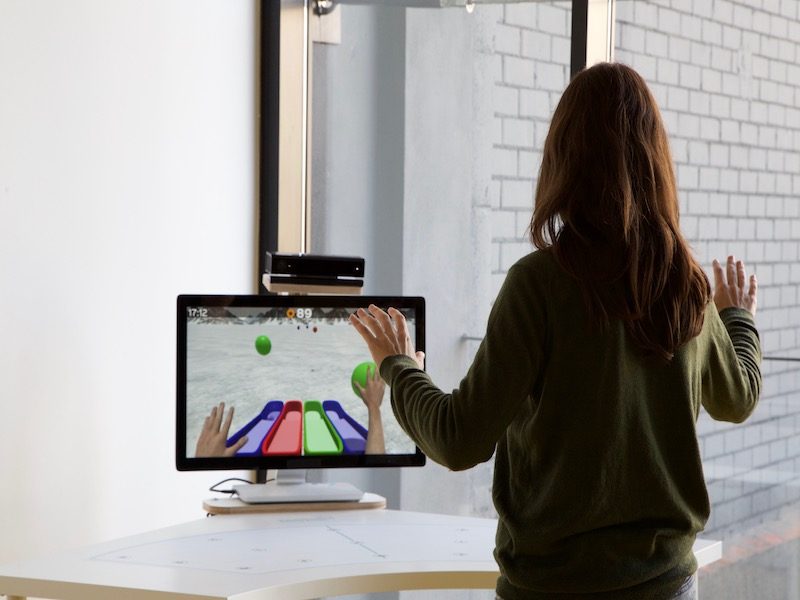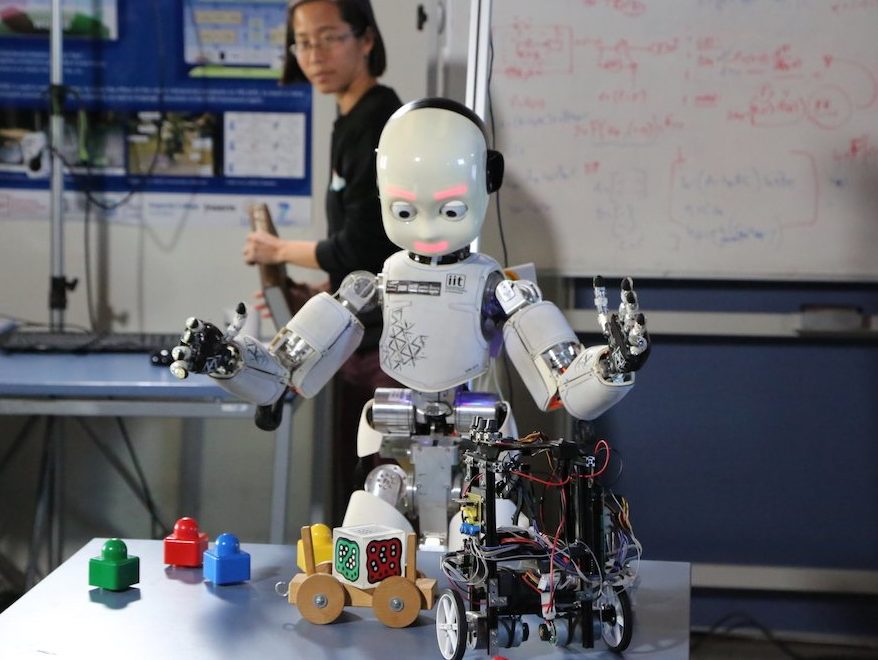Human Neurophysiology
Theories have to explain, predict and control and for this, proper empirical benchmarks must be satisfied.
Since 2016, SPECS is in the unique position to access intracranially implanted pharmaco-resistant epilepsy patients at Hospital del Mar (Dr. Rocamorra). Supported by the ERC cDAC project, SPECS has run dozens of experiments using advanced VR systems and developed an integrated BX3 compatible data processing pipeline which affords the validation of predictions derived from the DAC theory including questions on brain architectures, coding, volition and decision making with most results in the publication pipeline. One reported early insight is that the architecture of the brain is not static but rather surprisingly dynamic in its informational configuration (Arsiwalla, 2018).
SPECS psychophysiology lab also studies how humans react to various uni- and multisensory signals – visual, auditory and tactile stimuli. We assess human responses at different levels using subjective ratings, behavioral data, physiological and brain wave recordings. This data helps us to understand human perception and cognition mechanisms, with particular stress on the novel methods for diagnosis and treatment of various brain disorders (chronic pain, migraine, autism, depression, Alzheimer’s disease)


Psychophysiology studies include
- multisensory perception (sound, vision, touch)
- multisensory interactions for emotional stimuli (custom sound and video databases are created)
- sonification of EEG signals
- neurofeedback using mixed reality environments
- processing of eye-gaze in autistic children
- affective chronometry
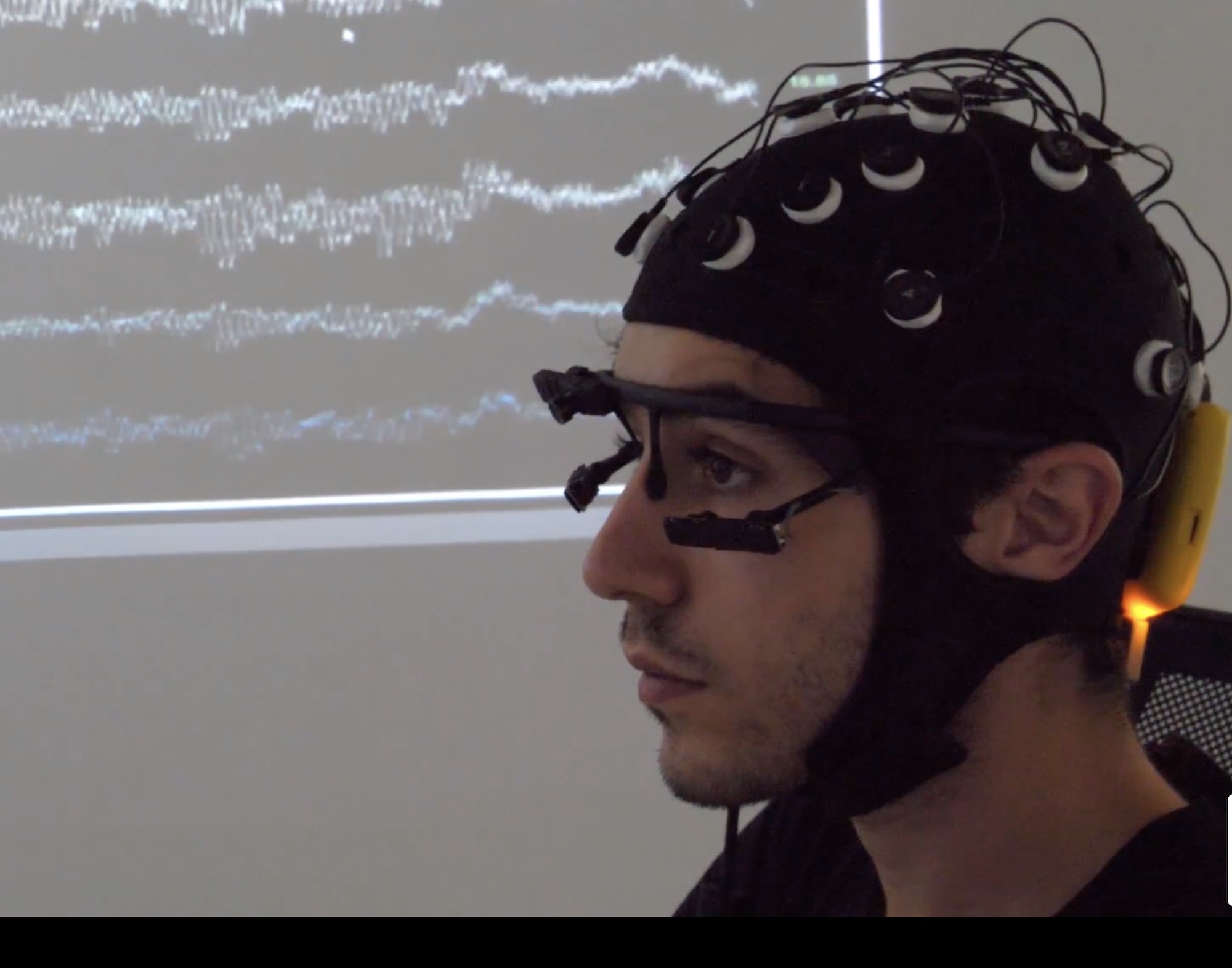
Key infrastructure
- Eye tracker (TOBII, X120)
- Physiological measuring devices and sensors (g.Mobilab):
- respiration sensor
- facial electromiography (EMG)
- electrodermal activity (EDA) sensors
- 4-channel electrophysiology (EEG) recording capability
- pulse sensor
- electrocardiogram (ECG) recording capability
- Dry EEG electrodes, ENOBIO (starlab)
- Various visual displays (including HMD and 50 inch LCD and plasma monitors)
- Various sound presentation (including stereo bone conduction headset, Oiido)


